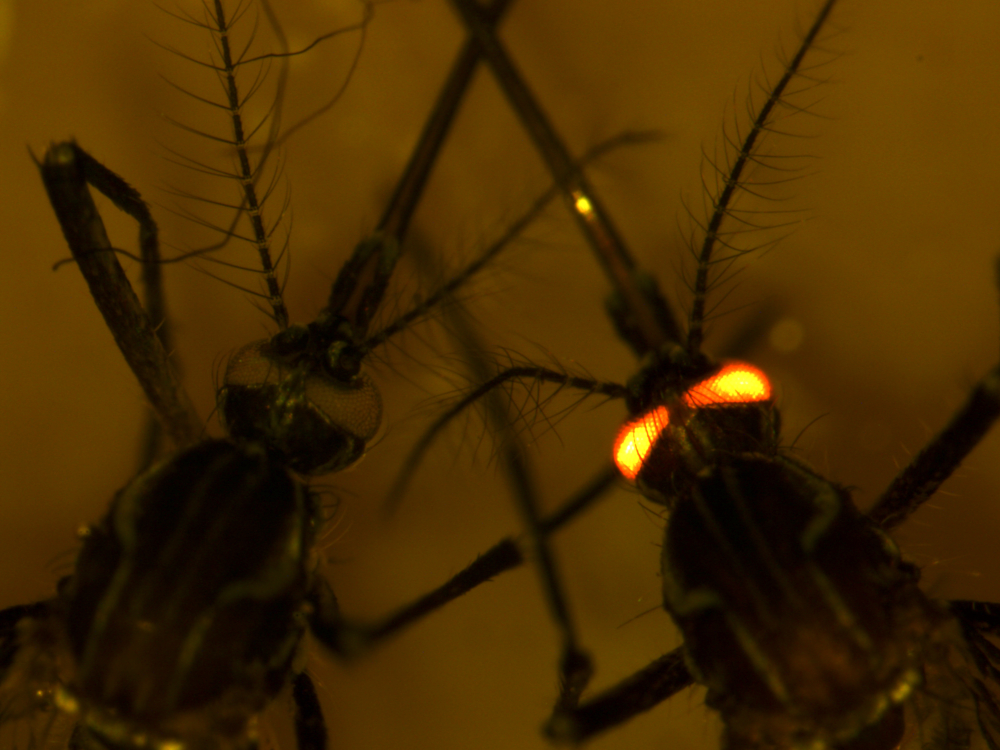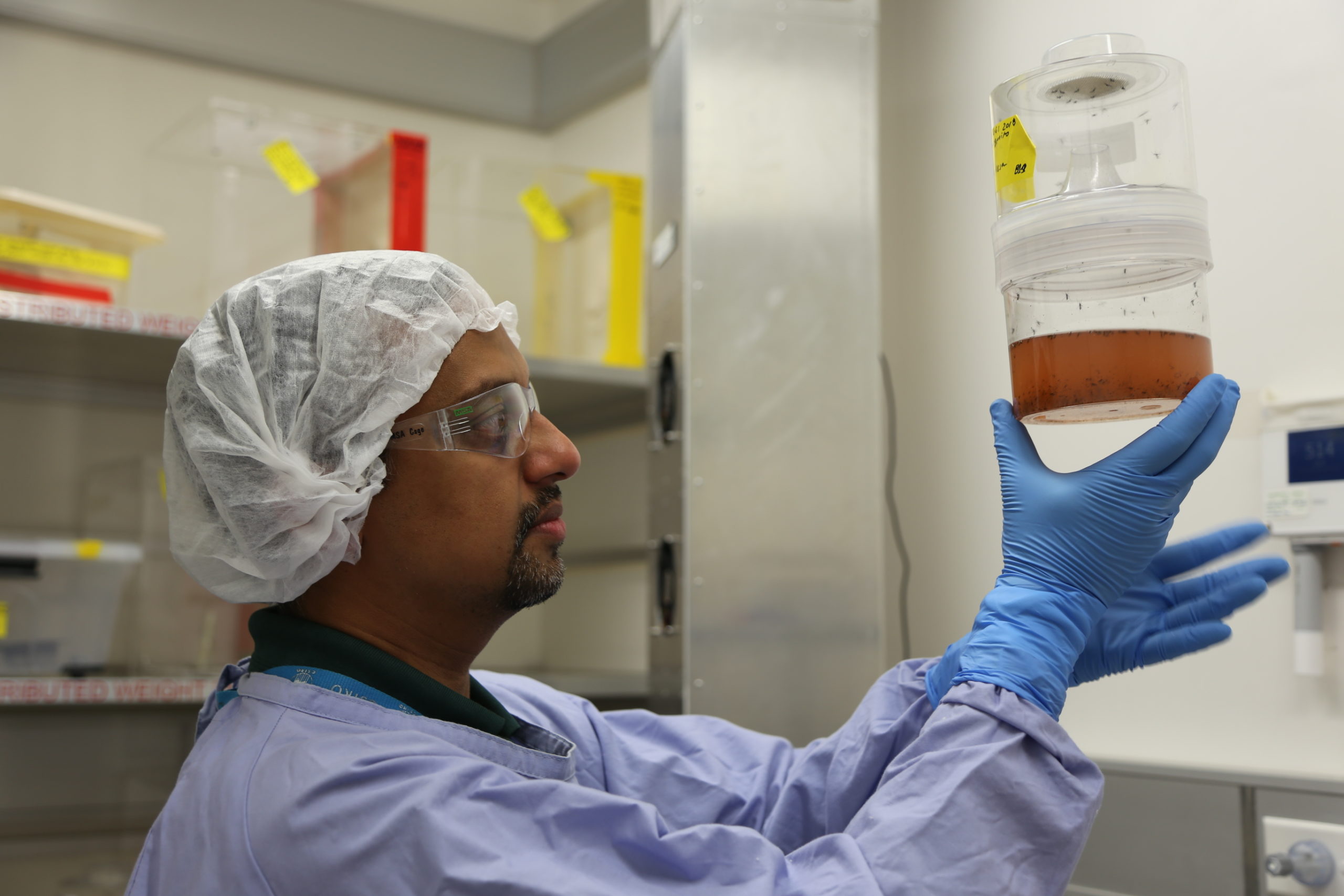
Scientists gave the dengue-resistant mosquitoes a red-eye gene so they could distinguish them from regular Aedes aegypti.
Dengue fever has boomed in recent years. More than half the people in the world are now at risk of infection. The symptoms are a bit like a serious case of the flu, including severe fever, headaches and muscle aches, and most people recover in about a week. But sometimes it can be more serious, even fatal, causing about 20,000 deaths worldwide every year.
It’s caused by a virus carried by mosquitoes. Specifically, the Aedes aegypti mosquito. You can catch dengue fever if you’re bitten by an infected mosquito. There are no known treatments and the available vaccine is only partially effective.
Dengue is common in tropical and sub-tropical areas. Here in Australia, the invasive Aedes aegypti mosquito has established itself in northern Queensland. If someone becomes infected with the disease overseas, then gets bitten by an Aedes aegypti mozzie in Australia, that mozzie can spread the virus to others – which is why we occasionally get small outbreaks.
Stopping the mozzies that spread dengue fever
So, what’s the answer to stopping the spread of dengue? You breed a new mozzie.

Our Senior Research Scientist Dr Prasad Paradkar observes freshly hatched mosquitoes and larvae in the study.
We didn’t need to reinvent the wheel: last year we published a paper with the University of California San Diego showing how we’d genetically engineered the Aedes aegypti mosquito to be resistant against spreading the devastating Zika virus.
Now, continuing our partnership with the university, we’ve done it again for the dengue virus. Using recent advances in genetic engineering technologies, we engineered a breed of the Aedes aegypti mozzie so it’s less likely to get and spread the dengue virus.
We tested the Aedes aegypti mosquitoes in our quarantined insectary at the Australian Centre for Disease Preparedness (ACDP) formerly the Australian Animal Health Laboratory (AAHL) in Geelong. ACDP is our national biocontainment facility designed to research the most dangerous infectious agents in the world.
Importantly, we’ve been able to target all four types of dengue. Previous attempts to genetically modify the mozzies have only worked for one or two types of the virus.
It’s early days and we need to do more research. But this new breed of mosquito has the potential to not only hamper the spread of dengue but also have impacts on other mosquito-borne diseases: think Ross River virus, yellow fever and chikungunya.
You can find the published research paper in medical journal, PLOS Pathogens.


18th January 2020 at 2:30 pm
How about developing a type of mozzie that isn’t always after our blood?
17th January 2020 at 9:49 pm
I thought James Cook University (Scott Wilkie) initiated this research years ago?
20th January 2020 at 11:08 am
Hi Ann,
We worked closely with JCU and Scott Ritchie on a previous mozzie project: Debug Innisfail in Northern Queensland, which aimed to suppress local Aedes aegypti populations. Rather than genetic engineering, that project used the bacteria Wolbachia to create Aedes aegypti mosquitoes that couldn’t successfully breed with the local mozzie population. Read more about it here: https://blog.csiro.au/what-a-buzz-why-we-released-millions-of-mozzies-in-northern-queensland/.
Kind regards,
Georgia
Team CSIRO